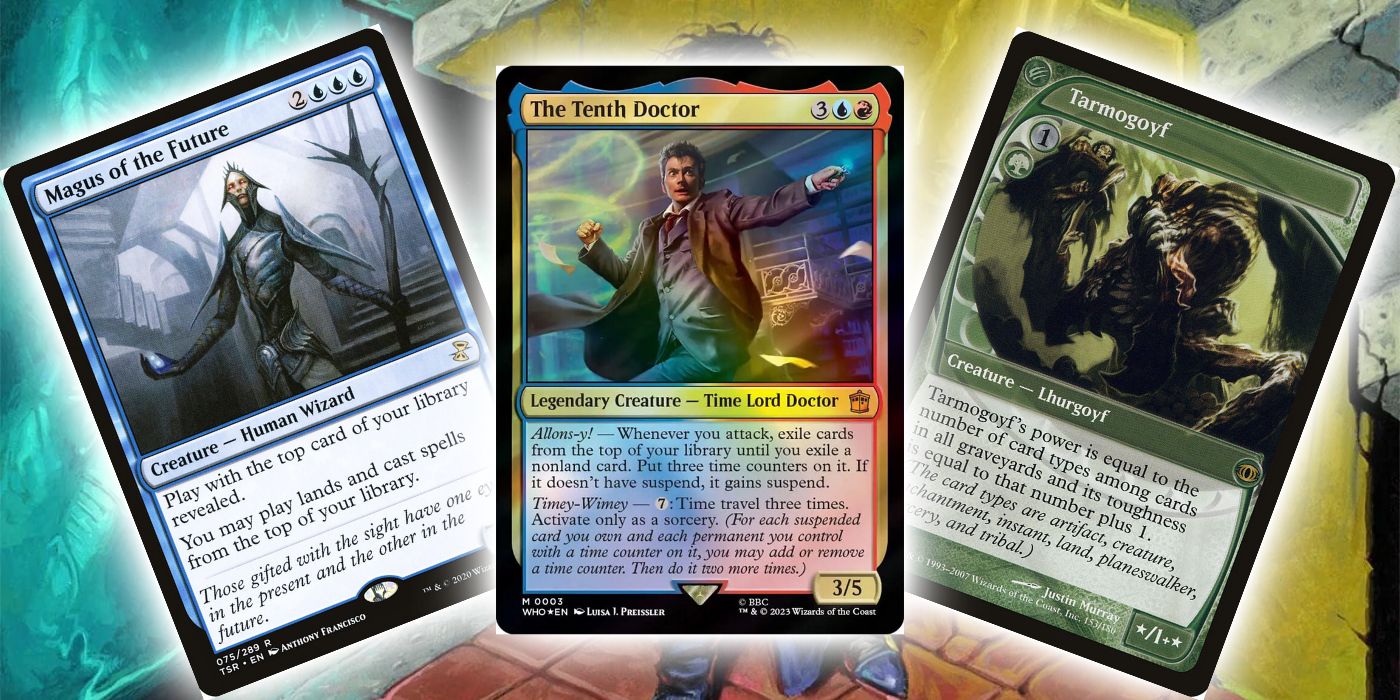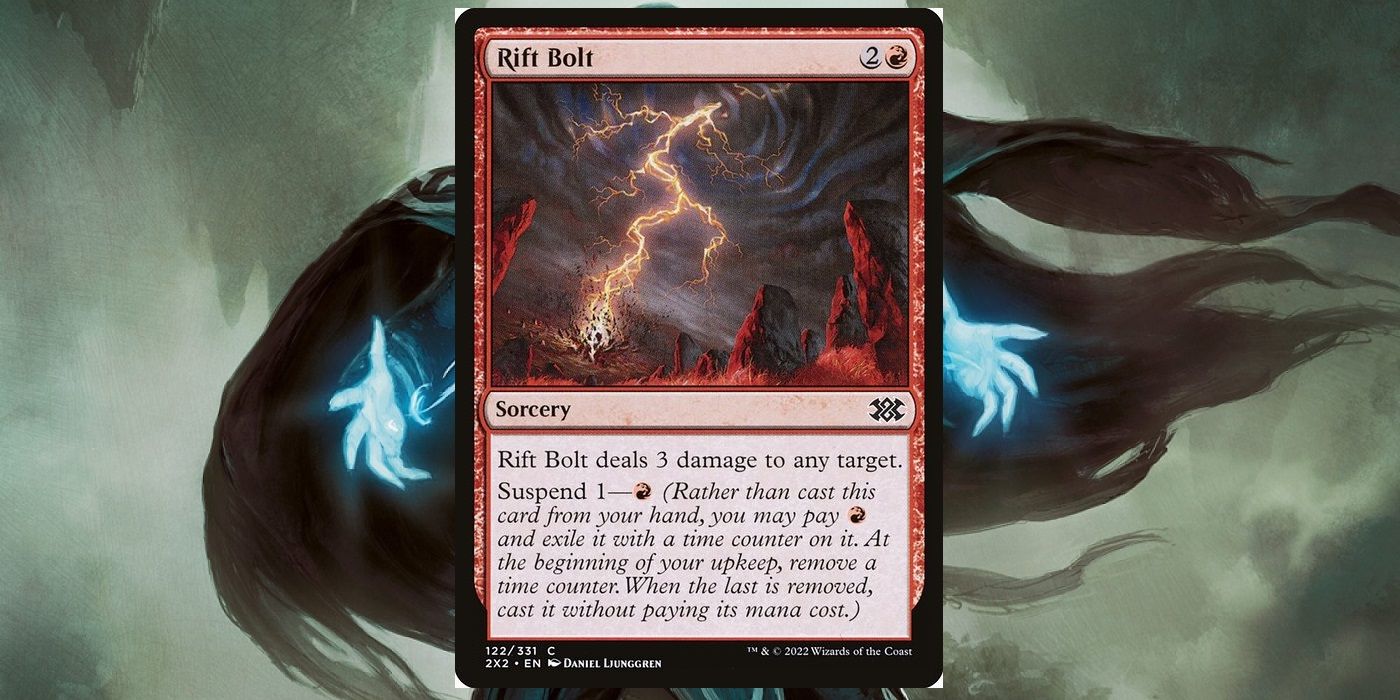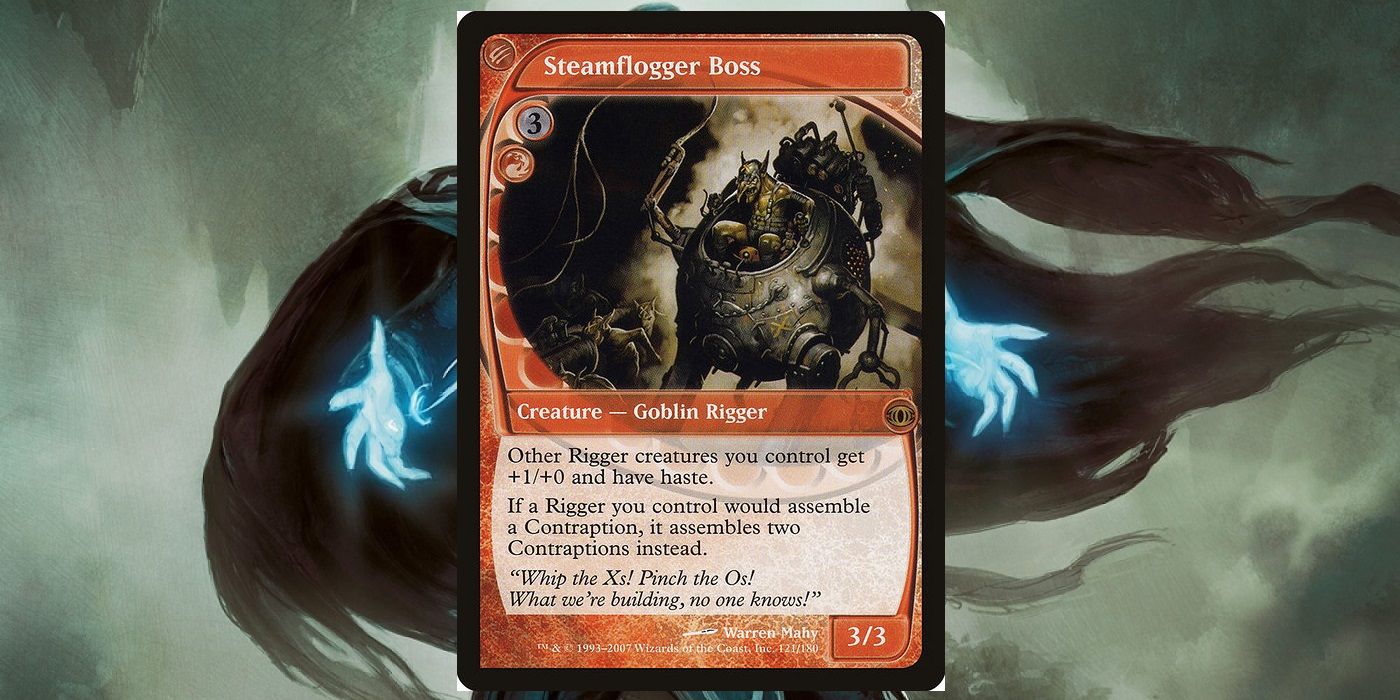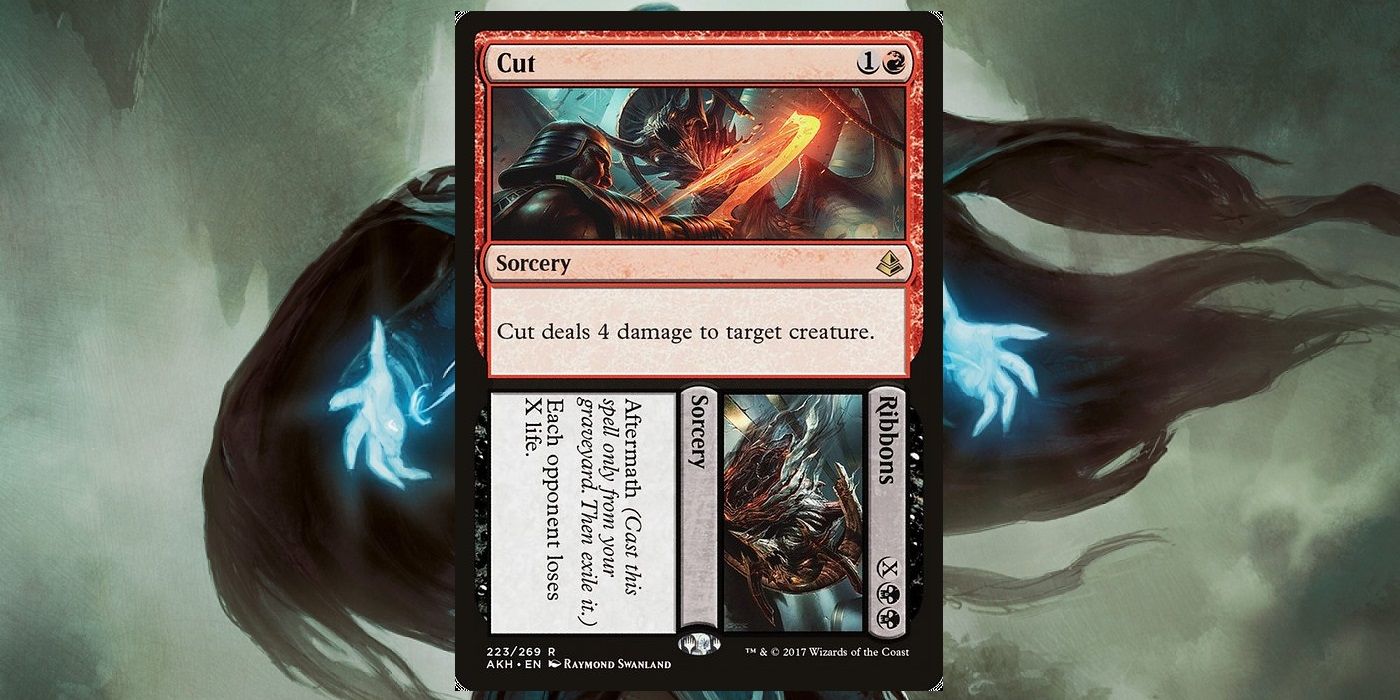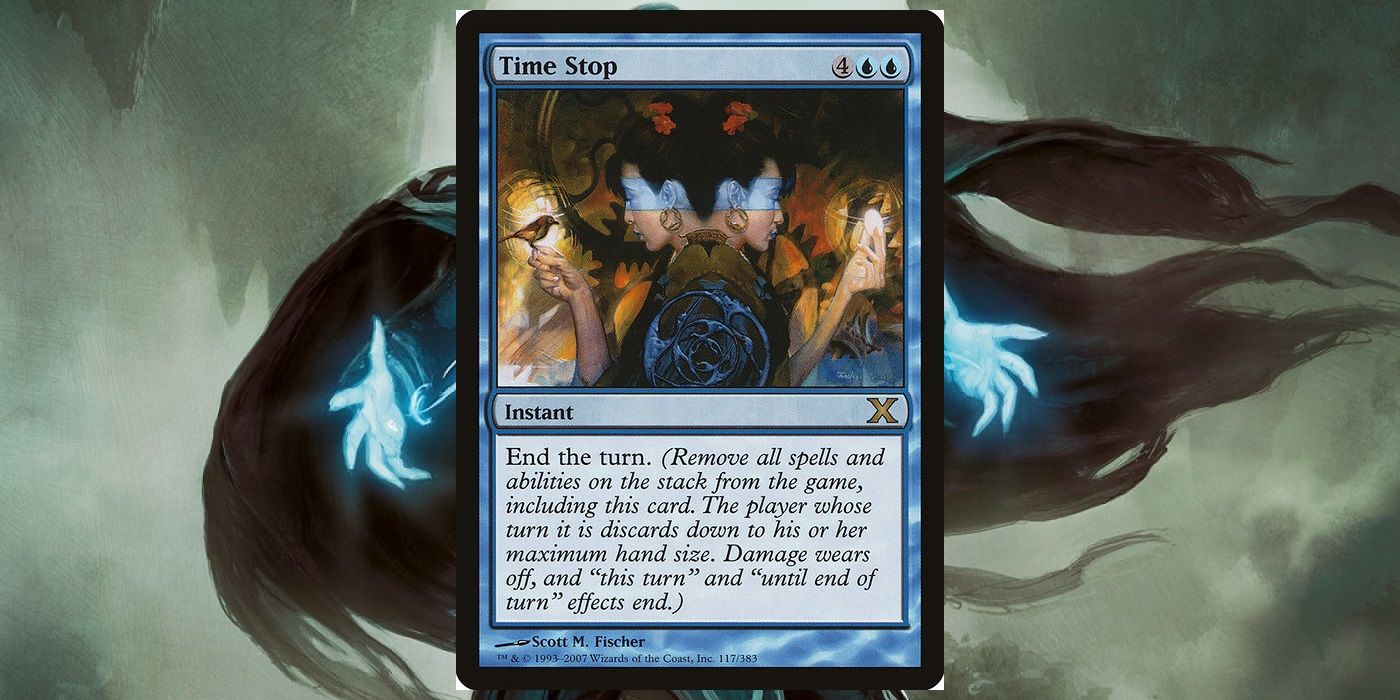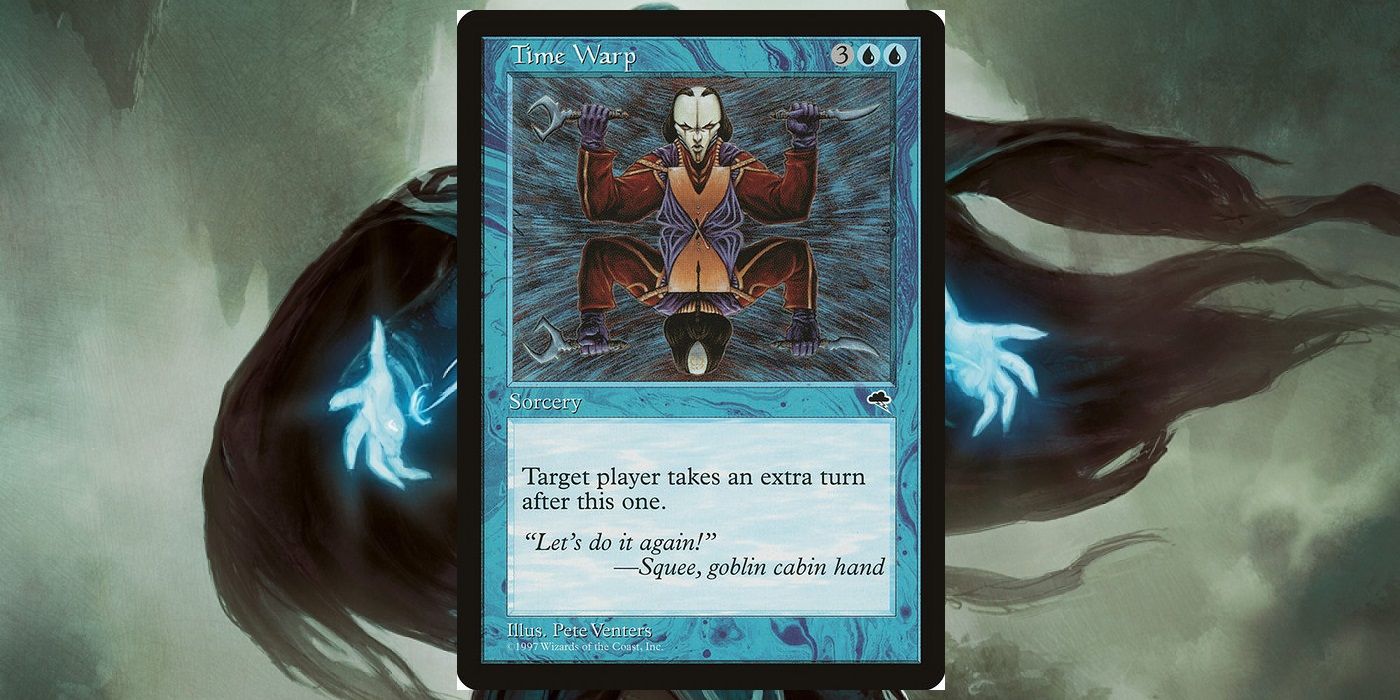Magic: The Gathering‘s next Universes Beyond product, a cycle of Doctor Who decks, will bring back time counters and introduce the Time Travel mechanic, which appears on the Tenth Doctor’s legendary creature card. Fans of BBC’s iconic sci-fi show will already be familiar with its many time-travel themes and storylines, but this is nothing new for MtG.
Plenty of mechanics, keywords, and recurring card effects in MtG tinker with time, and some of them date back to the game’s earliest days. Disrupting the flow of time isn’t easy to balance in this card game, but it can be done, with the past, present, and future intersecting and mingling in fascinating and powerful ways in all kinds of decks.
10 Suspend
Suspend is one of a few time travel mechanics introduced back in the Time Spiral block, which was all about the past, present, and future. Cards with suspend can be exiled from hand for their suspend cost, which does not count as casting them. The suspended card will then have one or more time counters placed on it.
On each upkeep, a time counter is removed, and when none remain, the suspended card is cast and put onto the stack. This effect may slow down a card’s casting, but in return, very little mana is spent. Some cards, such as Lotus Bloom, can only be cast via Suspend since they have no printed mana cost.
9 Vanishing
Vanishing is another time travel mechanic that appeared in Time Spiral, dealing with the fleeting present instead of the distant future or the bygone past. Permanents with Vanishing function normally for the most part, except they will enter the battlefield with time counters on them. Once the time counters are gone, the permanent is sacrificed.
Plenty of creatures with Vanishing are undercosted or have unusually high stats in exchange for being on the battlefield for a limited amount of time. Some other mechanics and keywords can interfere with this, such as Proliferate to add more time counters or Vampire Hexmage’s ability to get rid of a Vanishing creature right away.
8 Foretell
The Kaldheim set had many diverse mechanics and keywords, from Snow permanents to Saga enchantments and creature types mattering. Snow and Sagas were returning abilities, while Foretell was entirely new, acting as a variant of Suspend.
A card with Foretell can be exiled from the hand face-down for 2, then cast later for its Foretell mana cost, much like a version of Manifest or Morph but for non-permanents. This keeps the opponent off-balance, and many Foretell cards count on taking the opponent by surprise. Notably, the Foretold card cannot be cast on the same turn it was exiled from the hand, even if the player can afford all the mana costs. This maintains the flavor of Foretold cards being like omens of the distant future.
7 Futureshifted Cards
The Future Sight set was all about the future in meta ways. Various cards and effects in that set were meant to be futureshifted, suggesting that such effects would appear much later in the game’s future. Some cards in Future Sight wouldn’t appear again in regular expansion sets for years or even a decade.
Tarmogoyf is one such card, with its ability caring about Planeswalkers and Tribal cards shortly before they even existed. An even more notable example is Steamflogger Boss, whose second effect did literally nothing for many years. Finally, the Unstable set, an Un-set, put contraption assembly into the game to finally give Steamflogger Boss a purpose.
6 Forecast
Forecast was the Azorius Senate’s iconic mechanic from the original Ravnica block. Forecast allowed a card to apply a small effect from the hand without being cast, which came at the cost of mana and revealing the Forecast card. Often, a card’s Forecast effect will tie into the card’s main effect, such as using Plumes of Peace to tap a creature before enchanting it.
Forecast has strong flavor as a time-based mechanic, but it’s unlikely to return in future products, even the Doctor Who Commander precons. Forecast was poorly received by players, and WotC doesn’t like it either, so Forecast will remain a semi-obscure oddity of the Dissension set.
5 Aftermath
The Aftermath mechanic appeared in the two-set Amonkhet block to fit that block’s emphasis on the graveyard. Aftermath is a blend of split cards and Flashback, since each card with Aftermath has two different mini-cards with different effects, names, and mana costs.
Aftermath required the top half to be played, then the Aftermath half could be cast from the graveyard. Typically, these cards would work better when the two halves were cast in order, though players could cast just the Aftermath half if the card got milled or discarded.
4 Scry
Scry first appeared in the Fifth Dawn set on a small handful of cards like Magma Jet and Serum Visions, and it returned in a big way in the Theros block. In Theros, Scry was related to Greek-style prophets and fortune tellers seeing the future before it happened, so Scry appeared on many different cards of all colors.
Scry is an excellent way to peek ahead in time and see what the future holds on the top of a player’s library. Usually, Scry is used to get rid of unwanted land draws, though it can also help a player dig throgh their deck more quickly to find a certain type of card. There was also a short-lived inverse of Scry in the Time Spiral block, named Fateseal, which let a player use Scry on the opponent’s library instead.
3 End the Turn
Like extra turns, the “end the turn” effect does not have a formal keyword identity in MtG, but it’s always worded the same way and works the same way, so it feels consistent. Ending the turn is more expensive to do on the opponent’s turn, but still, it’s a great way to temporarily shut the opponent out of the game.
Ending the turn can be used on the caster’s own turn, too, and usually for low mana costs. This effect can help the player avoid negative “at the beginning of your end step” effects, such as exiling creatures that entered the battlefield with Unearth. In emergencies, the player might even end the turn to exile a removal spell or other instant-speed effects that they cannot counter otherwise.
2 Playing Cards From the Top of the Library
A few cards in MtG allow their controller to play cards from the top of their library, a clear and elegant example of players reaching into the future to seize powerful magic. Such effects tend to be blue and black, with Magus of the Future being a classic example.
At the cost of showing the opponent their library’s top card, a player can get lots of extra spells and land drops with this effect to get ahead. That not only gives the player more options, it also helps them dig through their library faster to find other cards that they really need. Some cards might be played from the library’s top for that specific reason, regardless of whether the player needs those future-cast cards in the moment.
Taking an extra turn doesn’t have a formally named keyword in MtG, but it still has a simple and consistent mechanical function. Usually appearing in blue and sometimes red mana, the “take an extra turn” effect is the ultimate time travel ability in MtG, and taking another turn can easily lead to victory.
A player might use cards like Time Warp if they are ahead on the board and can push damage, so they get two two turns’ worth of combat steps to finish off an opponent. Players might also take another turn if they’re about to combo off but need another untap step to get everything going, all while the tapped-out opponents never get a chance to interfere.
